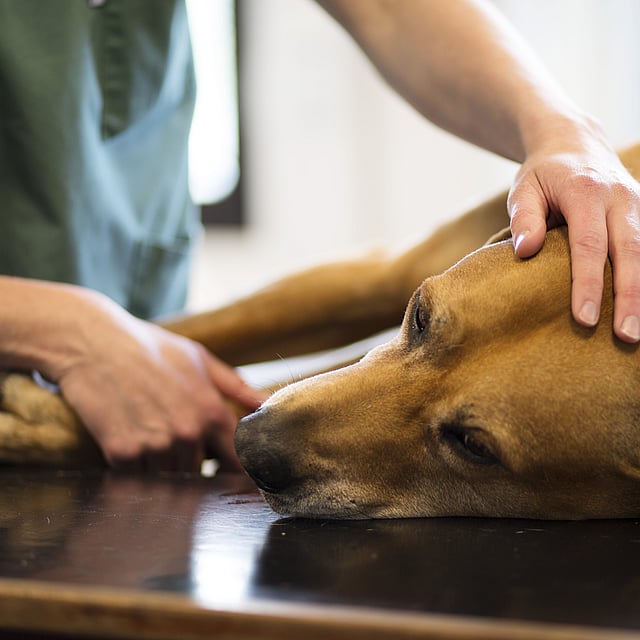A hormone implant measuring 2.3 x 12 mm (GnRH agonist) is inserted under the skin, like the microchip used to identify the animal. This is often done between the shoulder blades but sometimes also in the region of the navel. There the medication is broken down slowly by the body, during which it releases GnRH (gonadotropin-releasing hormone) continuously. This leads to increased secretion of testosterone at the start. As a result, the often undesirable testosterone-dependent behaviour often increases in this period.
After 2 to 3 weeks at the latest, the testosterone level in the blood then drops markedly. 6 to 8 weeks after implantation of the medication, the testicles will have shrunk by about one third and the complete effect of the medication will be reached.
Warning: because of this mechanism, chemically neutered male dogs are still fertile for up to 120 days.
Depending on the size of the implant and of the dog, the complete duration of the effect is either at least six or at least 12 months. It is subject to individual fluctuations. With complete breakdown of the implant and resumption of endogenous hormone production, the testicles return to their original size and consistency. Stud dogs are then fully fertile again. Implantation of Suprelorin is useful especially to investigate what character and behaviour change actually occurs when the hormonal component is removed.
In a household with a number of dogs, it can investigate the influence of neutering on ranking and thus the behaviour of the dogs in their own pack. If surgical and thus final infertility is subsequently decided on, the resulting operation wound will be smaller.
© AniCura, Diana Ersepke
